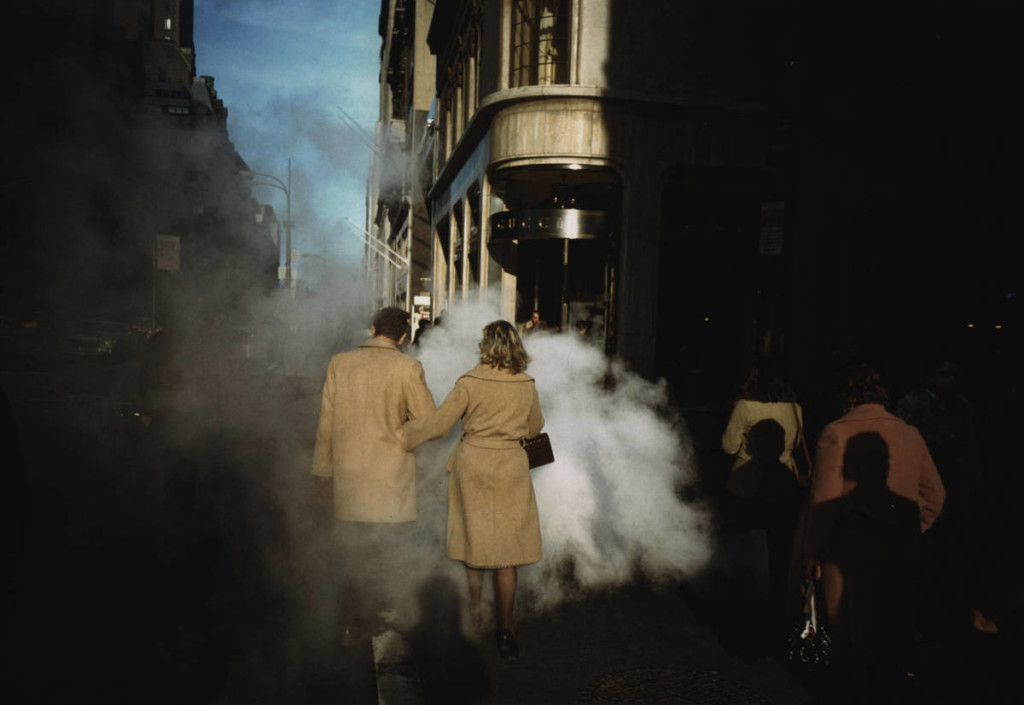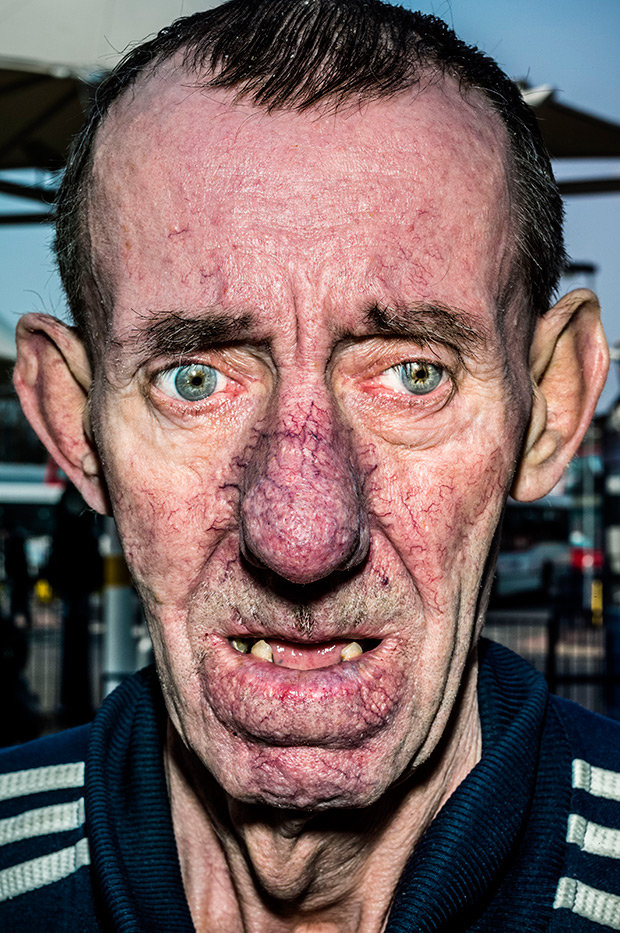When I read about long-term photography goals and what to achieve as a photographer, there is always this notion of creating your own style. A certain handwriting that makes it very clear that this is a photography crafted by your eyes. How long does it take to define your Street Photography Style and which steps are necessary to complete your own signature?
In the end is it even worth it to create some unique style and are photographs that much distinguishable that one can clearly say that this is a certain Street Photographer’s image?
Different Street Photography Styles
The Style in Street Photography from photographers can be viewed as different forms of creative expressions that are very similar throughout their portfolio. Although to the untrained eye a lot of Street Photographs look very similar and aren’t very easy to comprehend or “read”, there are different general styles one can follow.
The Basic Look
One easy distinguishable choice of style is between monochrome and color photographs. This is the most obvious choice but can be branched out even deeper.
- Monochrome
When we talk about black&white there are many different ways to express your creative vision. In the past, this was mainly influenced by the choice of film.
You could go with a more gritty look and underexpose the film first, to overexpose it in the development, or you could go with lower contrast and a more fine art approach.
Nowadays, those details can be influenced in post-processing the image and applying different filter-sets, for example, the Nik Film Collection where you have the choice of a contrast-rich look with a lot of film noise or a more flat look.
This could be one basis of your Street Photography Style, but shouldn’t be the only thing defining your photographs.
- Color Street Photography
The alternative would be to go the color route.
Here you also have the options of going for more contrast in your images or desaturating them.
The choice between monochrome and color is only one small step that could define your style but can be seen as the foundation of your future work.
The Content
Apart from the general post-processing choice of your images, there are far more important things to consider. In my opinion, the content always outweighs the general look, which means that I admire photographers who are able to create their style with their eyes and not the post-processing software.
To be honest, creating your own style through the content of your images is a lot more difficult than just slapping a filter that you adjusted a little bit over all your pictures.
This is why a lot of Photography Influencer are trying to sell “their” unique style with their filter presets and a lot of customers believe by purchasing these filters their images will look similar. Don’t fall for that – there is no shortcut to having a recognizable style.
As Street Photography is the expression of one’s personality the content is following your character.
What is your approach to Street Photography?
Are you getting close and up-front with people to catch them off-guard?
Do you weigh the composition more highly, layer ever image, embrace triangles or other compositional elements?
Or are your images 100% about the story?
How to get there
Developing a unique style takes time and requires that you as a person are grown in a way that you know what you want to share with the world and how you look at it.
As with everything in Street Photography, it takes a lot of time to develop your own style. Seek inspiration from your favorite photographers, but don’t directly copy them. Find out what you like about their pictures, see if you can create something similar, but do it your way.
When you have found a certain direction that you are content with, perfect it and make it yours. Follow it for a long time and work on a project that is cohesive. Publish this project and if it will turn out successful this can be the start of “your” unique Street Photography Style.
Do You need a unique Style

Then there is also the discussion if we as photographers really need a unique style.
When I take myself as an example, I am far from finding my unique voice. A style that is known as mine.
Since the beginning of learning Street Photography, I have been experimenting with different directions.
My first favorite was Bruce Gilden and so I tried to come close to what he did. Which means that I shot exclusively in Black & White and later added an off-camera flash to my equipment.
After following this style for a time and publishing my short series of the Berlin streets at night I felt that I had to change something.
The pictures didn’t represent anymore how I view the street and doing the same thing over and over again felt very stale.
I believe that as artists we are always in some sort of process going through different phases, changing “our” style and experimenting with different directions.
Therefore I don’t believe that Street Photographers need a personal style throughout their life.
The photographic style shouldn’t define us, but we should define our style. Keeping your photographs in a specific way because you feel that you are known for it would only keep your creativity in chains.
Nonetheless, I recommend once you have found a Street Photography Style that you are happy with to work on a long-term project and “manifest” this style as yours.
Development
Focusing too much on having the same photography style because your audience expects these images from you are only hindering yourself from finding out what you truly love.
As great as having your own handwriting is, I wouldn’t focus too much on it and just follow the flow.
Follow what you are happy with and experiment a lot. Even if this means that your style changes – that is only part of the progression. Not everyone will be happy with it, but you can’t please everyone and this shouldn’t be your goal anyway.
In music, there is a more clear distinction because bands and artists publish albums every other year instead of having a conscious stream of pictures that we as Street Photographers now mostly have on Social Media platforms.
Almost every time there are discussions coming up whether the music artist has changed too much and isn’t recognizable anymore, or if his music is too stale.
Too much progression and you are being heavily criticized for sounding “different”, but if you do the same thing, people will claim that everything sounds the same.
Finding the middle-ground is almost impossible, which means that you should rather focus on what you are doing anyway without considering what the public will think of you.
The Style of some Masters
Daido Moriyama
His Book “Labyrinth” on Amazon

When I think about the contrast-rich gritty style I automatically think about Daido Moriyama and how he published multiple photography books and projects in this style. He probably shaped the Japenese Street Photography culture to a bigger extent with others following his footsteps.
Yet, his style is very distinguishable from others.
Tatsuo Suzuki

To give a direct comparison to Daido Moriyama, here is another Japanese Street Photographer that follows a very similar approach, yet Tatsuo Suzuki’s images are different. They are more up-front, catching the people off-guard with his camera.
Bruce Gilden
Stern Monographie on Amazon

Another Street Photographer that can be put into the category of close Black&White Street Photographs is Bruce Gilden. He found this style and the subjects to be the most honest for him because it represents his own character the best. Coming from humble beginnings in Brooklyn he found that he always had a special connection to those mobsters or people living on the edge of society.
Joel Meyerowitz
Aftermath: World Trade Center on Amazon
 Being one of the early adopters of color in Street Photography, Joel Meyerowitz had a very distinct style in his color work and the way he always tried to frame whole scenes instead of focusing on one single character.
Being one of the early adopters of color in Street Photography, Joel Meyerowitz had a very distinct style in his color work and the way he always tried to frame whole scenes instead of focusing on one single character.
Martin Parr
Life’s a Beach on Amazon

On the other side of the color Street Photographers is Martin Parr. His work is more vivid and often pretty weird when it comes to the subjects. Almost kitschy but most of the time this is just his sense of humor. Either you have the same sense, or you simply won’t be getting into his work too much.
Can You choose the Street Photography Style Yourself
Earlier on I wrote that we as Street Photographers should influence our style and not the other way around.
Describing the styles of the masters in the chapter before is also only half the truth. Daido Moriyama was famous for his noisy black&white pictures, but he also did some color work.

Same with Bruce Gilden and his latest “Faces” project where he took portraits very close and in color.

The obvious picture look is very different as the images are in color, yet if we would describe the content and the general style, they are not far away from their more popular work, which leads me to believe that we as Street Photographers can’t choose our style deliberately, but that it is much deeper in our personality.
If we have a look at famous painters, they all have gone through different phases and experimented sometimes. Nonetheless, art historians are able to identify some paintings by the brush strokes alone.
Translating this into photography I would think that our “true” Street Photography Style is much more subtle than what we can obviously see.
We can follow a certain picture style and keep that the same, but this isn’t really what describes our unique Street Photography Style.
Do you browse through your photo library and notice that some images would go very well in a series?
This shows that we as photographers are often lead by our instincts and what we are interested in.
I don’t believe that we can choose our Street Photograph Style very deliberately or that we can influence it to a great extent. Maybe our unique voice can only be seen in retrospective, because the similarities in the work are so subtle, that it needs a lot of images to discover them. But the more we experiment we can see those similarities easier by changing everything else.
So if you want an answer for creating your unique handwriting in Street Photography, I would advise you to experiment a lot and photograph every day.
The core, your DNA, and character will only change little over your lifetime. Of course, your emotions may vary, your interests can shift, but the fundament will always be the same.
Therefore your style will show after a long period of photographing, but what defines your Street Photography Style is very subtle and can only be influenced minimally by your deliberate choice.





















